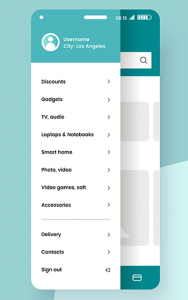Now more than ever, consumers are flocking to the internet to complete their shopping. From grocery essentials to DIY supplies to new casual outfits suitable for a work-from-home environment, many categories are seeing an uptick in direct-to-consumer sales.
Because of this, it’s a critical time for many brands to take a step back and look at the presentation of their eCommerce websites. Does the navigation menu make sense? Are products consistently named and properly categorized? Can shoppers easily fulfill the journey from the first page to the final checkout?
According to Statista, retail websites generated 14.34 billion visits globally in March 2020, an impressive increase from 12.81 billion visits just two months earlier in January 2020. Product taxonomy is a great way to take advantage of this increasing traffic and to ensure your company is on the right track toward higher conversions.
What is Product Taxonomy?

Product taxonomy is the structuring of your website, both from the backend (viewable only to you and/or the team that manages your website) and the frontend (what the shopper sees).
Your collection taxonomy lives in the backend, and helps your team establish a standardized way to collect and store product data.
On the frontend is your presentation taxonomy, which exists to simplify the way your customers find products on your website. This includes product categories, sub-categories, parametric filtering and more.
Your collection taxonomy fuels your presentation taxonomy. When product data is properly collected, standardized, categorized and organized, it is reflected by an eCommerce website that is easy to navigate, with products that are simple to find and buy.
How Does Product Taxonomy Help Increase Sales?
According to Amazon Web Services, 88% of online shoppers would not return to a website after having a poor user experience.
An easy-to-use eCommerce website creates a positive experience for shoppers, who are more likely to return to your online store if they’ve been able to shop it without frustration. If your products are categorized logically, show up in relevant search results, and can be correctly filtered by attributes like colour and size, then the customer journey should be quick and simple.
If your product display pages contain optimized and engaging content including well-written product descriptions, informative feature bullets, high-quality images and accurate specifications, a customer will feel more confident purchasing the item.
All-in-all, a well-built product taxonomy is the foundation of a positive user experience that ensures a customer can easily navigate and purchase from your site – and return to continue doing so.

What Other Services are Related to Product Taxonomy?
- Product Classification: Assigning products to their correct product categories
- Data Aggregation: Gathering missing product information to enable a more knowledgeable buying decision
- Data Cleansing: Standardizing and normalizing product attribute values
- Product Data Migration: Transitioning product data to a new platform, marketplace, website or product information management system (PIM)

